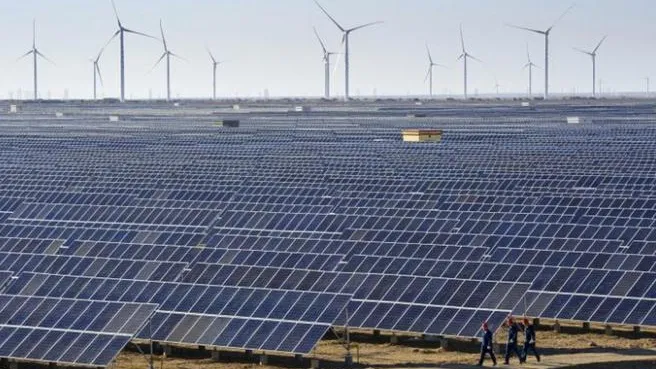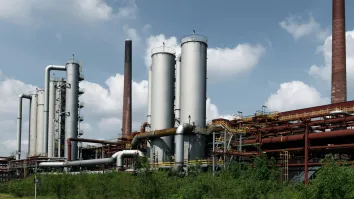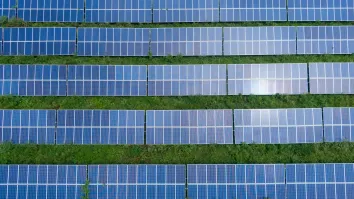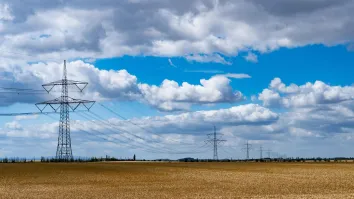
Can 150 gigawatts of green energy help phase out coal?
Southeast Asia's renewables push requires more capacity to challenge coal reliance effectively,” experts said.
Southeast Asia is poised to make significant strides in renewable energy, with 154 gigawatts (GW) of additional capacity planned for the next five years. According to the Global Energy Monitor (GEM), this development has the potential to offset about 55GW of coal power annually. However, despite the promising outlook, the region still faces the challenge of reducing its reliance on a young fleet of coal-fired power plants, necessitating a considerable expansion of renewables capacity.
Citing its global tracker data, GEM reported there is 98 GW of wind capacity and 55 GW of utility-scale solar capacity expected in the next five years. If attained, this will help meet 70% of the electricity need of the region by 2030, which is projected to grow by 40% more than 2020 figures. GEM noted the remaining 30% gap may be filled with storage capabilities deployed with rooftop and community solar installations, whilst also moving away from new coal and gas power capacity.
“Nonetheless, to close down existing coal power plants in the region whilst maintaining the same level of electrification, significantly more renewables are needed,” Kasandra O'Malia Project Manager, Global Solar & Geothermal Power Trackers, told Asian Power.
Read more: Could current and planned renewables capacity offset coal
O’Malia said Southeast Asia would need 100GW more of rooftop solar or an additional 55GW of offshore wind on top of its planned projects in operation to match the current generation capabilities of the region's coal-fired power plants.
The 154 GW planned renewable buildout is estimated to generate up to US$37b of annual savings versus burning coal, she noted. This could also help avoid nearly 148 million tonnes of coal used annually or about 55 GW in coal power plant capacity. This is also equivalent to half of the coal capacity currently in operation in Southeast Asia.
“If Southeast Asia were to bring online all of these planned wind and utility-scale projects it would cost roughly US$232b, but with a US$37b annual savings in direct fuel costs, these projects would be paid for in just over 6 years,” O’Malia said.
‘Very young’ coal fleet
Reducing the use of coal power will be challenging for the region, Dr. Zulfikar Yurnaidi, Team Leader of the 7th ASEAN Energy Outlook development, said considering Southeast Asia is home to a “very young” coal fleet.
“The average age of our coal fleet is maybe 12 years, which means it still has a lot of productive lifetime,” Yurnaidi, who is also the Manager of the Modelling and Policy Planning Department, said.
Assuming the minimum life is 30 years, coal-fired power plants will still have around 18 years which owners likely ought to maximise to generate revenue for profit or debt payment. This raises the need for financing to help retire coal plants sooner, Yurnaidi said.
This is what initiatives such as the Asian Development Bank’s Energy Transition Mechanism (ETM), which provides loans, grants, or investments for the early retirement or repurposing of coal-fired power plants, and the Just Energy Transition Partnership (JETP), which likewise mobilises funding to shift away from fossil fuels, are trying to address. Yurnaidi, however, noted that such initiatives need to be tailor-fitted to each market.
“It needs to be country-specific, because it will be different if you're addressing Indonesia, which is mostly coming from the national utility, from other countries where the role of private is stronger,” Yurnaidi cited as an example.
Moreover, Yurnaidi raised that the coal pivot will negatively impact the economy as it could translate to job losses and disrupt operations of industries in the supply chain, such as coal mines and transportation systems. In this light, he said markets should begin thinking of solutions to repurpose plants and mines. For instance, firing coal-fired power plants with alternative fuel, such as biomass, or turning coal mines into storage, much like in Germany.
Infrastructure and investments
O’Malia added renewables in Southeast Asia are also held up by lapses in grid connectivity as existing infrastructure are unable to handle the increased load.
“This causes future projects to seem less attractive to lenders who worry that they won’t see a return on their investments. Updating and adding to the electrical grid in these regions will both allow renewable energy projects to reliably provide power, whilst also making the region more resilient to climate change and increasing electricity access,” she said.
Data from its Global Solar Power Tracker and Global Wind Power Tracker found that utility-scale solar and wind capacity will likely grow by more than six times in the next five years.
Beyond this, O’Malia said an even higher hurdle lies in putting a stop to coal investments, which remain high in the region. In 2020 alone, nearly US$18b in subsidies for fossil fuel were made by governments across Southeast Asia “despite the uncompelling economics of both coal and gas,” she said. The region also has 37% of the remaining proposed coal power capacity outside of China.
“Even though the past year has underscored the risks—especially in Asia—of relying on natural gas imports, Southeast Asia ranks second in the world for prospective gas power plant buildout,” O’Malia said.
“Governments, banks, and other stakeholders still have to be pushed at all times to beat the inertia and politics behind fossil fuels.”
The JETP in Indonesia and Vietnam should only be the beginning of international partners that fund energy transition in Southeast Asia, O’Malia said. International governments and financial institutions should prioritise equitable funding rather than focusing only on the wealthiest nations, she added. After all, the region only received 4% of the global renewable energy investments in 2020 even as it made up 9% of the global population.
For their part, governments in Southeast Asia need to also ensure that the most vulnerable populations are made more resilient in the face of climate change. Policies in achieving renewables targets as well as subsidies should be geared towards greater access to energy and energy sovereignty at the community level, O’Malia added. The deployment of rooftop solar, adequate energy storage and interconnected grid infrastructure are just amongst the tools that could help protect these vulnerable populations.
Renewables in the region
In the absence of new policies, fossil fuels are projected to continue dominating the energy demand in the region, according to the 7th ASEAN Energy Outlook 2020-2050. This will largely be sourced from oil, which will likely account for 47% of the total final energy consumption through 2050.
Installed power capacity is also forecast to increase threefold to 959 GW in 2050, primarily consisting of coal (33.8%), natural gas (26.1%), and hydropower (21.6%). Despite the dominance of fossil fuels, the report projected that Southeast Asian markets are on track to achieve the regional target of increasing their renewable energy share by up to 35%.
Hydropower is expected to dominate the renewable energy mix in the region, followed by wind and utility-scale solar power with more than 150 GW installed capacity in the pipeline. Much of the region’s wind power will be from offshore wind projects in Vietnam and the Philippines. O’Malia noted that the Philippines, Indonesia, and Vietnam are particularly standing out as regional and global leaders in prospective utility-scale solar buildout. The markets are even projected to make up 5% of the world’s prospective utility-scale solar installations.
“In the future, this share of renewables will continue to be increasing, but still, at least until 2025, the share of coal will be still very high. Even after that up to 2050, if we continue with the baseline scenario, coal will still take a large share even in 2050,” Yurnaidi said.
“But beyond that, I think we can see the strong penetration of solar and wind. Hydro will continue to be the largest share of electricity generation.”



















 Advertise
Advertise







